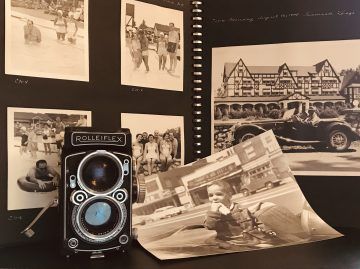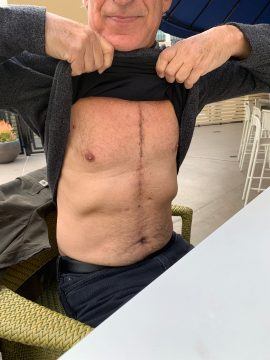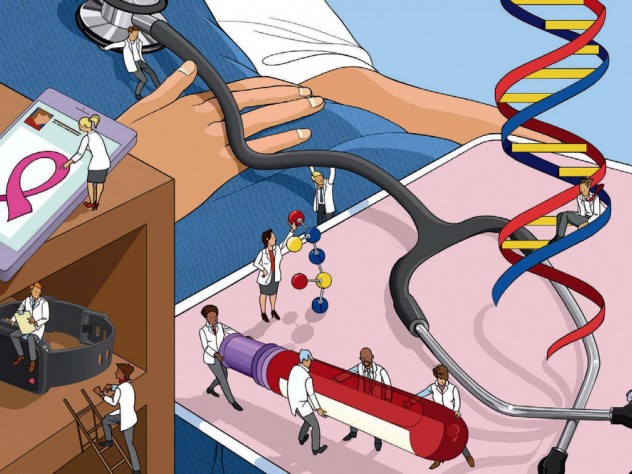by Eric J. Weiner
 An intransigent form of identity politics in combination with neoliberal ideology has left the modern university, if not in ruins, then lacking imagination and cultural capital. It has become a place of sequestered spaces—symbolic and real—where too many students and faculty fear discussing issues deemed to be controversial, inappropriate, or “political.” Across the social sciences/humanities, politics, religion, sex, sexual orientation, climate change, science, gender, economic inequality, poverty, reproductive rights/regulations, homelessness, race, Trump, democracy, capitalism, patriarchy, anti-Semitism, Israel, terrorism, gun violence, sexual violence, and white supremacy are just some of the topics that today make students and even some teachers uncomfortable. At best maybe these topics are addressed by creating some kind of false equivalent in an effort to feign neutrality and keep people comfortable. Discomfort in the classroom from ignorance, tension, power imbalances, conflict, disagreement, or any degree of affective and cognitive dissonance is no longer tolerated. While it used to be considered a fundamental part of the critical learning experience, discomfort of this sort now signals a flaw in pedagogy and/or the curriculum and a betrayal of trust. Learning should always feel good, be nurturing (maternalistic), and, above all, fun. If it’s not then there is hell to pay.
An intransigent form of identity politics in combination with neoliberal ideology has left the modern university, if not in ruins, then lacking imagination and cultural capital. It has become a place of sequestered spaces—symbolic and real—where too many students and faculty fear discussing issues deemed to be controversial, inappropriate, or “political.” Across the social sciences/humanities, politics, religion, sex, sexual orientation, climate change, science, gender, economic inequality, poverty, reproductive rights/regulations, homelessness, race, Trump, democracy, capitalism, patriarchy, anti-Semitism, Israel, terrorism, gun violence, sexual violence, and white supremacy are just some of the topics that today make students and even some teachers uncomfortable. At best maybe these topics are addressed by creating some kind of false equivalent in an effort to feign neutrality and keep people comfortable. Discomfort in the classroom from ignorance, tension, power imbalances, conflict, disagreement, or any degree of affective and cognitive dissonance is no longer tolerated. While it used to be considered a fundamental part of the critical learning experience, discomfort of this sort now signals a flaw in pedagogy and/or the curriculum and a betrayal of trust. Learning should always feel good, be nurturing (maternalistic), and, above all, fun. If it’s not then there is hell to pay.
The fear of being emotionally and intellectually uncomfortable and the strategies used to avoid it come from all over the ideological spectrum. Avoidance strategies, from the right and left, take the form of accusations about political bias; political (in)correctness-gone-wild; claims of social/intellectual marginalization; censoring viewpoints (books, speakers, media) that are deemed offensive; silencing people through various forms of protest; creating homogenized “safe spaces”; and policing, through different modes of surveillance, language, thoughts, and behavior. Retreating into intellectual silos on campus and online, students and teachers find comfort and solace in group-think, shared social practices, and aligned ideologies. The cost of these avoidance strategies for the individual and the republic is a form of idiocy, from the Greek “idiotes,” which describes a person who cannot participate in political and intellectual life because of their lack of skills, knowledge, and general ignorance about the responsibilities of civic life. At the same time the left and right are doing their best to defang the critical civic function of the university, most universities are now aligned with neoliberal ideology, focusing on market-based competition, branding, privatization, the de-unionization of faculty/staff, and job training. Within this toxic brew of schooling, tribalism, and ideology, students are seen (and generally want to be seen) first and foremost as children in need of protection, entertainment, and comfort; savvy and influential consumers; agile agents of social media unofficially employed to promote their schools; and docile members of the university “family.” Read more »





 It doesn’t take much. A small piece of gravel, spit out by a truck’s wheel, ricochets off the windshield, taking a tiny chip of glass with it. A microscopic divot and discreet little lines, like crow’s feet at the corner of an eye. Barely noticed for months, the accordion of heat and cold compress and expand, adding and relieving pressure. Then finally, the scratches spread out across the glass like an avant garde spider web.
It doesn’t take much. A small piece of gravel, spit out by a truck’s wheel, ricochets off the windshield, taking a tiny chip of glass with it. A microscopic divot and discreet little lines, like crow’s feet at the corner of an eye. Barely noticed for months, the accordion of heat and cold compress and expand, adding and relieving pressure. Then finally, the scratches spread out across the glass like an avant garde spider web.
 by Leanne Ogasawara
by Leanne Ogasawara
 employees, a move that could increase wages and benefits for hundreds of thousands of struggling workers. […]
employees, a move that could increase wages and benefits for hundreds of thousands of struggling workers. […] We’ve seen a couple of these artists before. FernLodge is this guy Joe from Canada, whose music is (as is all of this music actually; follow the links) available on Bandcamp. However, while most artists, even when giving their music away for free, allow you to “name your price” (which in turn allows you, if your price isn’t zero, to put that music into your Bandcamp “collection,” available to download whenever you want), Joe simply sets the price at “free” (which means you can’t put it into your online collection even if you want to). As you can tell by listening, Joe is being way too modest, as
We’ve seen a couple of these artists before. FernLodge is this guy Joe from Canada, whose music is (as is all of this music actually; follow the links) available on Bandcamp. However, while most artists, even when giving their music away for free, allow you to “name your price” (which in turn allows you, if your price isn’t zero, to put that music into your Bandcamp “collection,” available to download whenever you want), Joe simply sets the price at “free” (which means you can’t put it into your online collection even if you want to). As you can tell by listening, Joe is being way too modest, as  David Julius knows pain. The professor of physiology at the University of California, San Francisco, School of Medicine has devoted his career to studying how the nervous system senses it and how chemicals such as capsaicin—the compound that gives chili peppers their heat—activates pain receptors. Julius was awarded a $3-million Breakthrough Prize in life sciences on Thursday for “discovering molecules, cells, and mechanisms underlying pain sensation.” Julius and his colleagues revealed how cell-membrane proteins called transient receptor potential (TRP) channels are involved in the perception of pain and heat or cold, as well as their role in inflammation and pain hypersensitivity. Much of his work has focused on the mechanism by which capsaicin exerts its potent effect on the human nervous system. His team identified the receptor responsive to capsaicin, TRPV1, and showed that it is also activated by heat and inflammatory chemicals. More recently, he has revealed how scorpion venom targets the “wasabi” receptor TRPA1. Drug developers are now investigating whether these receptors and others could be targeted to create nonopioid painkillers.
David Julius knows pain. The professor of physiology at the University of California, San Francisco, School of Medicine has devoted his career to studying how the nervous system senses it and how chemicals such as capsaicin—the compound that gives chili peppers their heat—activates pain receptors. Julius was awarded a $3-million Breakthrough Prize in life sciences on Thursday for “discovering molecules, cells, and mechanisms underlying pain sensation.” Julius and his colleagues revealed how cell-membrane proteins called transient receptor potential (TRP) channels are involved in the perception of pain and heat or cold, as well as their role in inflammation and pain hypersensitivity. Much of his work has focused on the mechanism by which capsaicin exerts its potent effect on the human nervous system. His team identified the receptor responsive to capsaicin, TRPV1, and showed that it is also activated by heat and inflammatory chemicals. More recently, he has revealed how scorpion venom targets the “wasabi” receptor TRPA1. Drug developers are now investigating whether these receptors and others could be targeted to create nonopioid painkillers. Until I began the long and happy passage of reading all of Anton Chekhov’s short stories for the purpose of selecting the twenty for inclusion in The Essential Tales of Chekhov, I had read very little of Chekhov. It seems a terrible thing for a story writer to admit, and doubly worse for one whose own stories have been so thoroughly influenced by Chekhov through my relations with other writers who had been influenced by him directly: Sherwood Anderson. Isaac Babel. Hemingway. Cheever. Welty. Carver.
Until I began the long and happy passage of reading all of Anton Chekhov’s short stories for the purpose of selecting the twenty for inclusion in The Essential Tales of Chekhov, I had read very little of Chekhov. It seems a terrible thing for a story writer to admit, and doubly worse for one whose own stories have been so thoroughly influenced by Chekhov through my relations with other writers who had been influenced by him directly: Sherwood Anderson. Isaac Babel. Hemingway. Cheever. Welty. Carver. Nuclear energy is controversial among politicians, environmental activists, and investors. But new reactor designs, the immense energy-density of nuclear fuel, and the lack of carbon emissions make nuclear power attractive, if not crucial, amid growing energy demands and a changing climate.
Nuclear energy is controversial among politicians, environmental activists, and investors. But new reactor designs, the immense energy-density of nuclear fuel, and the lack of carbon emissions make nuclear power attractive, if not crucial, amid growing energy demands and a changing climate. There is a moment in Adrian Lyne’s film Lolita (1997) that is burned onto my memory. I was probably around 12, up late, watching it on terrestrial television. Lolita and her guardian, lover or captor have been moving between seedy motels, the romantic aesthetics waning until they wrestle on distressed sheets in a darkened room. The bed is covered with coins. Humbert has discovered Lolita has been stashing away the money he has ‘become accustomed’ to paying her, and he suddenly fears she is saving it in order to leave him, something that has not yet occurred to him. The shots are intimate, violent and jarring, ruptured by a later scene in which Lolita shouts: ‘I earned that money!’ We realise that Lolita has learned that sexual acts have monetary value.
There is a moment in Adrian Lyne’s film Lolita (1997) that is burned onto my memory. I was probably around 12, up late, watching it on terrestrial television. Lolita and her guardian, lover or captor have been moving between seedy motels, the romantic aesthetics waning until they wrestle on distressed sheets in a darkened room. The bed is covered with coins. Humbert has discovered Lolita has been stashing away the money he has ‘become accustomed’ to paying her, and he suddenly fears she is saving it in order to leave him, something that has not yet occurred to him. The shots are intimate, violent and jarring, ruptured by a later scene in which Lolita shouts: ‘I earned that money!’ We realise that Lolita has learned that sexual acts have monetary value. William Dalrymple’s
William Dalrymple’s 